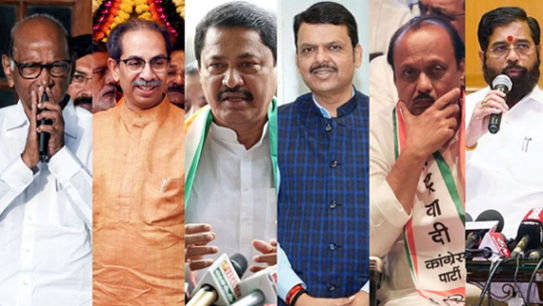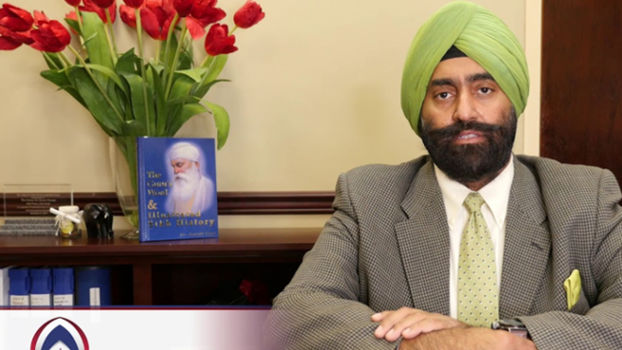
What is the Happy Index, results of which were recently made public for this year and well announced seemingly with fanfare by the Western media. “From 2024, the report is a publication of the Western-based Wellbeing Research Centre at the University of Oxford.” (Wikipedia ) It is primarily supposed to represent a survey of how people around the world, including in India see how happy they are. According to the Happy Alliance, (Yes, it really exists) “The Happiness Index measures life satisfaction, the feeling of happiness, and other happiness domains: psychological well-being, health, time balance, community, social support, education, arts and culture, environment, governance, material well-being, and work.” But there are some key problems with it.
That is whether the index is painting realistic pictures inclusive of major positive advancements in the Global South and India, in particular. And if these reports are sensitive enough to the different cultures and definitions of happiness compared to European ones, for example? After all, the significant majority of the top ten ranked countries are from Northern Europe. One interpretation, by giving a quick uncritical and superficial read of it is that the South, even including stellar India, is largely and essentially considered a basket case of “misery”. This is underscored by the statement, “In 2024, India finds itself at the 126th position out of 146 countries on the World Happiness Index, marking it as one of the least joyful nations worldwide.” (India Today) But can such a conclusion or even the overall rankings be seen as really of unbiased and even useful value to countries like India, outside the West? I contend, largely not.
So, who were some of the top political supporters of such an index and using it as a major economic indicator in the early years of its developmental inception? In 2009 Europe’s Nicolas Sarkozy, former French president was big on this idea. (And the famed Economist magazine gave him and the idea a big writeup on it.) No wonder at the time, as he likely wanted the voters not to focus on the grim traditional statistics measuring performance by GNP or unemployment after Wall Street had almost destroyed the Western economy with its greed with derivatives. And if you look at Europe today, or especially 25th ranked US, there is tremendous to significant pessimism and unhappiness amongst many, given the high cost of living while Indians generally have more optimism with the direction the country and the Narendra Modi-led government is going. Something tells us that this index is nearly void of such considerations and adds to its lack of utility to countries like India.
However, one rightfully assesses this new report, just about no one thinks this years’ top ranked Finland is a “dump”. Yet, these rankings are too Eurocentric,(ex UK), against not only India but even most of the Anglosphere (US, UK, Canada, and Australia) – all ranked, rather low to the Nordics such as Denmark, Iceland, Norway and Sweden, not just Finland. These are cold countries, usually with exorbitant energy costs, long winters, often with high suicide rates and very costly to live in and now with emerging anti-immigration forces and growing racism. And by Finland joining NATO recently, it is in the cross hairs of Russia along its long boundary with that country with a massive mobilized military pointed at it. Even a Finn I “interviewed” recently, described his people as not being the most sociable and very good at hiding their happiness. For me, at an anecdotal level of social interaction, I find Cambodians as happy, not Finns so much. Finland is a country I made two long stays in. But yes, the social safety net is generous but the index figures just do not tell all, clearly.
Then there is a major war going on within Europe’s borders with highly ranked Nordics very nearby to it that has further zapped their economies. India faces nothing of the sorts, guided by the PM’s pro-peace and strong security policies. How was that sufficiently taken into account? Or was the question on peace effectively sidelined, convenient to a western bias?
The West is also still at its hyper-money printing and borrowing to fund its (proxy) wars, Wall Street and their banker friends and a considerable safety net that it likely sadly cannot sustain. Yet their financing of all of these is causing inflation worldwide and higher interest rates.
Defending this additional major focus on happiness, France’s Sarcozy stated, “If leisure has no accounting value because it’s essentially full of non-market activities like sport or culture, we put productivity below human fulfillment.”(CNBC.) But the corollary then by using his and other such westerners’ logic on this would be that if hard-working Indians spent large amounts of time sitting in front of a TV eating potato crisp snacks for instance and doing nothing but feeling happy about it as a state of their leisure, should this be accounted for as an economic positive indicator? Most Indians would say no, but then one wonders if the West is evermore losing common sense on such basics? Rather, India and the overall emerging South do not have time for such nonsense, hedonism and spiritual depravity as they try to uplift their standards of living and sense of a balanced spirit. Mass welfarism, fentanyl addictive drug use and bankrupting the state is not in most Indians’ dictionaries, especially those following the Modi way of hard work and high character. Being happy, happy western style, however the West defines it is not such a priority of countries moving quickly like India up the development and geopolitical ladder. Indians do not want to be part of western stagnant and indebted economies especially in Europe looking for more war. Indeed, they prefer the Modi way growing fast and positively And not evermore like the US and Europe in stagnation with ballooning borrowing, including from China to pay for their supposed happiness and at Indians’ expense.
Peter Dash, an educator writes extensively on geopolitics and lives in the Global South.















